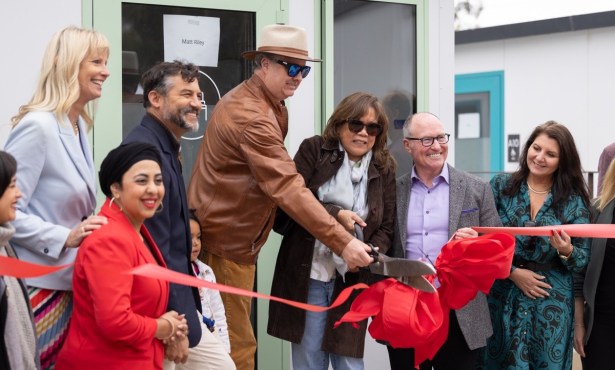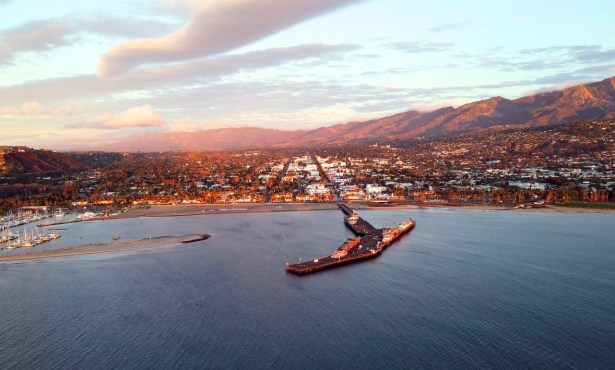Three Little Words
Share the Road
A marriage counselor once told me that the way to think about differences with your spouse or partner was to quietly say to yourself at stressful moments, “The ways in which you make me crazy, make us whole.” I’m trying to keep those words in mind as I follow some of the recent online conversations between motorists and cyclists.
Erika Lindemann’s recent Pedal On column received over 25 reader comments. Many were strongly assertive of either bikers’ or motorists’ rights. Moral battle lines were clearly drawn. Some readers were disparaging of cyclists. This type of polarization follows any article about a car-bike accident, bad road behavior, or where cyclists should ride.

I want to move today from a discussion of where adult cyclists should ride to a look at why vehicular coexistence is difficult and, especially, how we can all make it easier. Three little words might be the key. No, I’m not talking about I love you or even please and thank you. I’m talking about Share the road. Motorists and vehicular cyclists both want to get from point A to B as quickly, efficiently, and safely as possible. We have to do that on mixed-usage streets, where cars, bikes, trucks, motorcycles and scooters all share the same road.
In our daily rushing around, we are losing the ability to share, something most of us learned in preschool. I learned during my years running an early childhood center that it is very difficult for two-year-olds to share anything. Doesn’t matter what it is—a toy, a lap at story time, the biggest cookie, or being first in line to go to the gym—they want it to themselves. By the time they turn three, 12 short months (but a third of their lives) later, they have learned to take turns, to share, that not everything is mine.
The soon-to-be-completed Cliff Drive lane re-striping project will add bike lanes between Meigs and Loma Alta Streets. It is a perfect example of smart, forward-thinking urban and transportation planning that improves the road for everyone. Yes, it’s possible that average commute times for motorists might increase by a few seconds. Count to yourself, one Mississippi, two Mississippi, three Mississippi… How many text messages, e-mails or Facebook friends will you miss? Sharing, as young children learn sometimes, involves small sacrifices. I don’t know about you, but I’d happily give up those seconds for a safer route to home, school, or work.
We’re not going to stop traveling the same roads. The number of cyclists in Santa Barbara is growing. Data from the most recent census shows that, since 2000, local bike commuting has grown from 3 percent to 5 percent. Los Angeles, over the past three years, has seen a 48 percent increase in the number of cyclists. Nationally, bike trips over the past 20 years have grown from 1.7 billion a year to four billion a year. They have tripled since 1977. Sadly, as riders have increased, so have conflicts between cyclists, motorists, and pedestrians
If you’ve ever been to Southeastern Pennsylvania, you’ve seen the large Amish population navigating the narrow, winding country roads in horse-and-buggies. Accidents happen occasionally; tempers flare. But I don’t think many drivers pass the Amish and curse them, complain that they are self-centered and selfish, or wish that they drove on the sidewalks (if they exist). Motor vehicles and horses share the road. And yes, occasionally even buggy drivers receive reckless driving citations. (Some of the offenders are even caught drag racing down rural roads on the way to church! Impetuous youth are found everywhere.)
Los Angeles City Council recently passed a pioneering law to protect local cyclists from harassment by drivers. The ordinance makes it a crime for drivers to threaten cyclists verbally or physically and allows victims of harassment to sue in civil court without waiting for the city to press criminal charges. At the state level, legislators are considering a law that would require drivers to give cyclists at least three feet of space while passing. Senate Bill 910 is cosponsored by the city of Los Angeles, and it has won the support of regional politicians who recently launched a “Give Me Three!” safety campaign.
These are all good steps if you believe that laws or legislation change behavior. More wise words from that same therapist I quoted earlier: “You can give people skills and knowledge, but you can’t change personality.” I may be wrong but I believe that aggressive drivers or show-off cyclists won’t necessarily change their personalities because of the threat of a lawsuit or a safety campaign. Roadies in packs on weekend rides or youthful fixie riders will still want to strut like this Porltandia rider! Motorists in souped-up sports cars will still drive too fast and aggressively. Young buggy drivers will want to drag race to impress their sweethearts.
Sharing dolls and trucks as a three-year-old or the road as an adult makes the world a better place. We should and must design livable streets and roads that encourage safe behavior by all users. A road with bikers, cars, scooters, trucks and motorcycles is a complex transportation system. That system should have rules and laws that encourage positive behaviors.
I always love the assuredness of those adults who, in dealing with complex human problems, see the world as black or white. I labor each day to make decisions in a world of gray June gloom. Sharing is not black or white; it involves the nuanced shades of social responsibility. As a motorist you have to pay attention to the bicyclist on your right and the kid on the skateboard and the delivery truck that might stop at any moment. Oh, was that my cell phone ringing? It’s not even gray; it’s complexity shaded with 10 mega-pixels of every color in the rainbow. Sharing the road will always be difficult. But if preschoolers can share their toys, we as adults can share the road.


